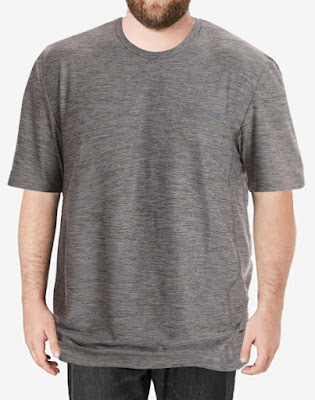Navigating Support: Understanding Compression Socks and Diabetic Socks
Compression socks and diabetic socks are two types of specialized hosiery designed to address specific medical needs and promote lower limb health. While compression socks focus on improving circulation and reducing swelling, diabetic socks aim to prevent complications associated with diabetes, such as neuropathy and foot ulcers. In this article, we will explore the differences between compression socks and diabetic socks, their respective benefits, and how to choose the right option based on individual needs.
Through a series of bullet points, we will navigate the landscape of support offered by compression socks and diabetic socks, providing insights into their features, considerations, and best practices for usage.
Through a series of bullet points, we will navigate the landscape of support offered by compression socks and diabetic socks, providing insights into their features, considerations, and best practices for usage.
- Understanding Compression Socks:
- Compression socks are elastic garments designed to apply graduated pressure to the legs, ankles, and feet, promoting blood flow and reducing swelling.
- They are commonly used to manage various circulatory issues, such as varicose veins, deep vein thrombosis (DVT), and edema.
- Compression socks are available in different compression levels, ranging from mild to moderate to firm, depending on the severity of the condition being treated.

Credit: differenttouch.com
- Understanding Diabetic Socks:
- Diabetic socks are specially designed socks intended to protect the feet and lower limbs of individuals with diabetes.
- They are made from soft, moisture-wicking materials and feature seamless construction to minimize friction and reduce the risk of irritation and injury.
- Diabetic socks are typically non-constrictive and have extra padding in sensitive areas to provide cushioning and prevent pressure points.
- Differences Between Compression Socks and Diabetic Socks:
- Purpose: Compression socks focus on improving circulation and reducing swelling, while diabetic socks aim to prevent foot complications associated with diabetes, such as neuropathy, ulcers, and infections.
- Compression Levels: Compression socks come in various compression levels, ranging from mild (15-20 mmHg) to moderate (20-30 mmHg) to firm (30-40 mmHg), while diabetic socks do not typically feature graduated compression.
- Material and Construction: Compression socks are made from elastic materials such as nylon, spandex, or polyester, while diabetic socks are made from soft, breathable fabrics such as bamboo, cotton, or moisture-wicking blends.
- Features: Compression socks may have reinforced heels and toes, as well as graduated compression, while diabetic socks may have seamless construction, non-binding cuffs, and extra cushioning.
- Benefits of Compression Socks:
- Improved Circulation: Compression socks help promote blood flow and prevent blood from pooling in the legs, reducing the risk of circulatory issues such as varicose veins and DVT.
- Reduced Swelling: The gentle pressure applied by compression socks helps reduce swelling and edema in the legs, ankles, and feet, providing relief from discomfort and fatigue.
- Prevention of Blood Clots: Compression socks can help prevent blood clots by improving circulation and reducing the risk of venous stasis, particularly during long periods of immobility or travel.
- Benefits of Diabetic Socks:
- Protection Against Injuries: Diabetic socks are designed to minimize friction and pressure on the feet, reducing the risk of blisters, calluses, and foot ulcers.
- Moisture Management: Diabetic socks wick moisture away from the skin, helping to keep the feet dry and preventing fungal infections such as athlete's foot.
- Comfort and Cushioning: Diabetic socks feature extra padding in sensitive areas such as the heel and forefoot, providing cushioning and support for individuals with neuropathy or foot deformities.
- Considerations When Choosing Compression Socks:
- Compression Level: Consult with a healthcare provider to determine the appropriate compression level based on individual needs and medical history.
- Size and Fit: Proper sizing is crucial for maximizing the effectiveness of compression socks. Measure the legs carefully and choose socks that fit snugly but comfortably, without constricting or causing discomfort.
- Length and Style: Compression socks come in various lengths, including knee-high, thigh-high, and full-length options. Consider lifestyle and preferences when selecting the length and style of compression socks.
- Considerations When Choosing Diabetic Socks:
- Material and Construction: Look for diabetic socks made from soft, breathable fabrics such as bamboo, cotton, or moisture-wicking blends. Ensure seamless construction and non-binding cuffs to minimize friction and irritation.
- Padding and Cushioning: Choose diabetic socks with extra padding in sensitive areas such as the heel and forefoot to provide cushioning and support for individuals with neuropathy or foot deformities.
- Moisture Management: Select diabetic socks with moisture-wicking properties to keep the feet dry and prevent fungal infections such as athlete's foot.
- Best Practices for Using Compression Socks and Diabetic Socks:
- Wear Them Consistently: For optimal effectiveness, wear compression socks and diabetic socks consistently throughout the day, especially during periods of activity or immobility.
- Proper Care and Maintenance: Follow manufacturer's instructions for washing and caring for compression socks and diabetic socks to ensure longevity and effectiveness.
- Monitor for Changes: Regularly inspect the feet and lower limbs for any signs of irritation, blisters, or discoloration when wearing compression socks or diabetic socks. Seek medical attention if any concerning symptoms arise.
- Conclusion:
- Compression socks and diabetic socks are valuable tools for promoting lower limb health and managing specific medical conditions.
- Understanding the differences between compression socks and diabetic socks, as well as their respective benefits and considerations, can help individuals make informed choices based on their individual needs and preferences.
- By navigating the landscape of support offered by compression socks and diabetic socks, individuals can take proactive steps to enhance circulation, reduce swelling, and prevent foot complications, ultimately promoting overall health and well-being.







No comments